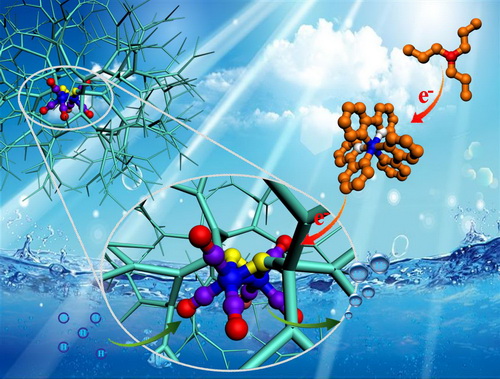 The requirement to develop clean and sustainable sources of energy has stimulated new approaches for the conversion and storage of solar energy other than by photovoltaic cells. Of these approaches, the photocatalytic evolution of hydrogen from water is at the forefront. The photochemical production of hydrogen by mimicking natural photosynthesis is considered to be one of the most attractive and potentially useful approaches. In nature, the interconversion of protons and hydrogen is efficiently catalyzed by metalloenzymes known as hydrogenases, which exist in many microorganisms and rely on metals abundant on earth. Since the biological structures and the functionalities of the active sites of hydrogenases were proposed, chemists have made tremendous efforts to model hydrogenases for energy conversion. Of these modeling studies, those on diiron hydrogenase have inspired further research, and analogues of the active sites of hydrogenase have been developed that have high fidelity and result in a significant improvement in the catalytic interconversion of H2 and H+. Diiron hydrogenase mimics for the photochemical production of hydrogen have been constructed by various strategies. However, only a few systems have reached turnovers on the order of hundreds and turnover frequencies of several hundreds per hour under visible light irradiation. Recently, a hybrid system comprising ZnS and a hydrogenase mimic driven by UV light resulted in turnovers of over 2600 being obtained. The reported quantum yields for the diiron hydrogenase mimic are just a few percent. Therefore, the construction of robust hydrogenase models with high photocatalytic activity and efficiency remains a great challenge. A three-component homogeneous catalyst system has been prepared with an IrIII complex as the photosensitizer, artificial hydrogenases bearing a diiron core and dendritic frameworks as the proton reduction catalyst, and triethylamine as the sacrificial electron donor. An initial turnover frequency of over 7240 h−1 and a quantum yield of up to 28 % were determined for the photocatalytic evolution of hydrogen.
Angewandte Chemie International Edition |

